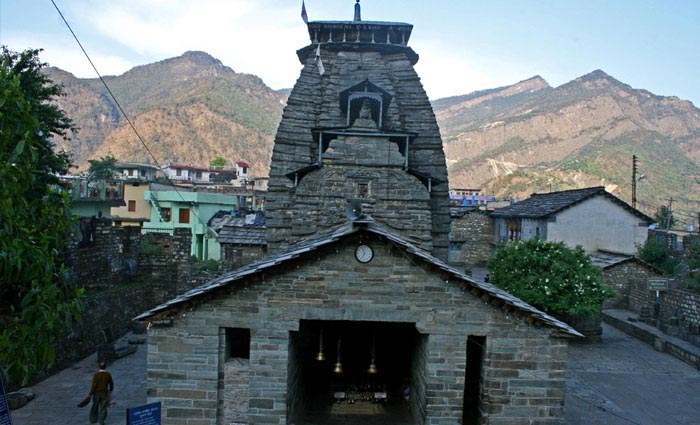Gopinath Mandir

Information of Gopinath Mandir, Gopeshwar, Chamoli, Uttarakhand
Gopinath Mandir is a popular Shiva temple found in the Gharwal region of the Himalayan Mountains. This is an ancient stone temple having many architectural values. This is an important temple for the Hindus and especially for the Shivites. It is beautifully temple found at an altitude of 2286 meters above the sea level in the upper Himalayas. It is located in the Gopeshwar Town, Chmoli District of Uttrakhand State in India.
Gopinath Mandir Religious Significance
Gopinath and Rudhranath is the other name of Lord Shiva called locally by the villagers. It is one of the pnach kedar for the Hindu pilgrim's circuit in the lower and upper Himalayas. All sects of Hindus come here for worshiping Lord Shiva. It is also a major temple for the Shivaties, a Hindu sect of peoples who worship Lord Shiva as their main God. This temple does not allow the devotees to give bath the Shiva Ling with water and milk. Here only the floral tributes must be made. Daily rituals are conducted here for its devotees.
Gopinath Mandir Mythology & History
In the ancient times its local ruler named Sagar found a cow adorn with Shiva Linga and used to grant milk. From this great devotion he decided to build a huge temple here. Since the cow is a pet animal of Lord Shiva. This cow is known to be still giving milk and for this belief, pilgrims who come here only take flowers to offer him. When this temple construction was completed, it gained the popularity slowly. Another story of this temple is as per the ancient texts, lord Shiva threw his mystical trident over the Kama Deva to kill him. The place where the trident fell was worshiped later as Gopinath Mandir. Thus the mythological importance is well accepted by the people and the importance of the temples is well known today among the mass and devotees with increase in number of visit.
Gopinath Mandir Architectural Significance
The Katyuri Dynasty built this temple in between 9th to 11th Century AD. It is found in the Nagara Architectural forms, which are commonly found in the North Indian temples. This temple is a built of granite stone. There are two main towers on it top which are little bit curved and found closed on its top. The major tower has a porch structure on its top making it very rear in this part. Another important feature of this temple is the 24 door access to reach its main sanctum sanctorum where Lord Shiva is placed. A beautiful idol of Lord Shiva in the dancing form is found here, which is known as the Nat Raja. There are many motifs found inside this temple structure, these are in the floral designs. The most important feature of this temple is its Trident. It is made of alloy and starts to vibrate with a mild touch. This can also be not moved by any force and stands here with a strong grip for centuries without getting any rest or damages. Three such tridents are found here with similar nature, which was gifted by a Nepali King named Anekmalla. There are also many traces of ruined temples found here, since it was built over a period of three centuries. A few constructions were stopped or destroyed in the phase of time, which were known as the Gopeshwara temples. From architectural point of view, the temple is well organized and has unique style of architecture, which is one of its kind built during the era of 9th to 11th century.
Festival at Gopinath Mandir
Gopinath Mandir celebrates the Shiva Rathri as its main festival. Here many devotees come here for worship. Mainly the Shivites are seen in large number on this day. This auspicious day pull devotees from its nearby villages and celebrate here grandly. The Chamoli light festival is also an important festival which occurs in the Diwali time. This is a weeklong festival held here. Apart from its main festival, its nearby sub deity festivals are also celebrated here with its local villagers and many devotees to visit this temple first as it are primary deity.
- Andhra Pradesh Temples
- Assam Temples
- Bihar Temples
- New Delhi Temples
- Goa Temples
- Gujarat Temples
- Jammu and Kashmir Temples
- Karnataka Temples
- Kerala Temples
- Madhya Pradesh Temples
- Maharashtra Temples
- Odisha Temples
- Punjab Temples
- Rajasthan Temples
- Sikkim Temples
- Tamil Nadu Temples
- Telangana Temples
- Uttar Pradesh Temples
- Uttarakhand Temples
- West Bengal Temples